As the age at which children receive their first phone skews younger and younger, there is increasing concern surrounding the effect on children’s mental health and academic achievement. While a Stanford Medicine survey did not find any significant correlation between phone use and children’s well-being, a teacher’s day-to-day reality of managing phones in the classroom can be complicated and frustrating. In fact, 72% of U.S. high school teachers say that cellphones are a major cause of distraction among students, due in part to a lack of standard, school-wide policy enforcement.
These statistics underscore the critical need for effective classroom management strategies to address this challenge. Teachers who take a proactive, explicit approach to cellphone policies have the opportunity to establish firm rules and even identify positive use cases for cellphones in the classroom.
The Challenges (and Benefits) of Cellphones in the Classroom
Like the paper airplanes and note-passing of yesteryear, cellphones present significant challenges for teachers trying to maintain a focused and equitable learning environment. The following are some of the most common issues educators face when students bring phones into the classroom:
- Distraction from Learning
Students may focus on texting, gaming or browsing social media instead of participating in lessons or completing assignments. Notifications and alerts from phones can also disrupt both students’ and teachers’ concentration. - Cheating During Exams
Smartphones provide easy access to search engines, messaging apps, calculators and other tools that students may use to cheat on tests or assignments. - Cyberbullying
Phones can be a tool for bullying through social media, messaging apps or taking unauthorized photos or videos of classmates or teachers. - Classroom Management Issues
Constantly monitoring or confiscating phones can interrupt the flow of lessons and create friction between students and teachers. It can be challenging for teachers to set and enforce consistent cellphone policies, especially when students find ways to circumvent the rules. - Equity Concerns
Not all students have access to smartphones or data plans, which can create inequities if phones are incorporated into learning. Therefore, teachers may struggle with enforcing policies fairly when students have varying levels of access to technology. - Inappropriate Content
Students may access or share inappropriate content, such as violent, explicit or harmful materials, which can disrupt the classroom environment and lead to serious disciplinary action. - Parental Expectations
Some parents expect to have constant access to their children via text or calls, which can complicate enforcement of no-phone policies. - Teacher Burnout
The need to continually address phone-related issues can contribute to teacher stress and burnout and take time and energy away from instruction.
Despite these challenges, cellphones can also offer valuable educational benefits when incorporated effectively into lessons:
- Access to Educational Tools and Resources
Smartphones can provide access to a wide range of apps, websites and digital tools that enhance learning, such as language translators, wildlife identification apps and educational platforms like Quizlet or Kahoot. - Encouraging Technology Integration
Using phones in class helps students develop digital literacy and prepares them for a tech-driven world where smartphones are common tools for work and communication. - Enhancing Collaboration
Smartphones enable students to collaborate easily on group projects through messaging apps, shared documents or brainstorming tools. - Emergency Communication
Phones let students quickly communicate with parents or guardians in case of emergencies or urgent situations. - Personalized Learning
Students can use phones to learn at their own pace and access educational videos, eBooks or online courses that cater to their individual needs. - Access for Students With Disabilities
Smartphones offer accessibility features, such as speech-to-text, screen readers and visual aids, which support students with disabilities and enhance their learning experience. - Real-World Problem Solving
Incorporating cellphones into lessons helps students practice solving real-world problems, such as using navigation apps in geography or budgeting apps in math.
If you are a teacher considering incorporating cellphones into your classroom activities, be sure you have a clear, comprehensive plan before allowing students to use their phones for learning.
How to Set Clear Cellphone Policies
Students of any age typically respond well to structure, so using clear, deliberate language around cellphone use will help students understand your expectations and their own responsibilities for this technology.
Whether you designate certain time periods for phone use or allow them only for certain activities, follow these tips for creating a successful cellphone policy:
- Define Purpose and Goals
Explain the “why” behind your policy. Emphasize that the policy is designed to enhance learning, reduce distractions and create a positive classroom environment — not merely to make students suffer or take away their belongings. - Involve Students in Creating the Policy
Collaborating with students to establish rules gives them a sense of ownership. This can lead to better understanding and adherence to the policy. - Be Specific and Consistent
Clearly outline when and how cellphones can be used (e.g., during group projects, research tasks or emergencies). Specify prohibited activities, such as texting, gaming or accessing social media during lessons. - Post the Rules Visibly
Display the policy prominently in the classroom and include it in your syllabus to ensure that students (and parents) are reminded of the expectations. - Set Consequences for Violations
Clearly outline the consequences for breaking the rules, such as warnings, confiscation or contacting parents, and enforce them consistently (more on this later). - Create Designated Phone Zones or Times
Allow controlled phone use during specific times, such as the last few minutes of class for checking messages, or designate a “phone station” in the classroom. - Use Positive Reinforcement
Acknowledge and reward students who adhere to the policy or demonstrate responsible phone use, and encourage others to follow suit. - Provide Secure Storage Solutions
Use phone storage solutions, such as lockable pouches or designated cubbies, to minimize distractions while keeping phones accessible in emergencies. - Communicate With Parents
Share the cellphone policy with parents at the start of the year, so they understand the expectations and can support you at home. - Model Responsible Use
Demonstrate appropriate phone behavior by only using your own phone for educational purposes (or refraining from using it altogether) during class. This sets a good example for students to follow. - Review and Revise as Needed
Periodically revisit the policy to ensure it aligns with your teaching goals and addresses any new challenges that arise.
If you need help crafting or enforcing an effective policy, consult a veteran teacher or a student behavioral specialist for their expert advice.
Consequences and Incentives for Using Cellphones in Class
Having clear consequences for cellphone policy violations establishes guardrails that will help students comply and contribute to a successful classroom environment.
Effective consequences for misuse of phone privileges may include:
- Verbal warning: A simple reminder to put the phone away before escalating to further consequences.
- Temporary confiscation of the phone: The phone is held for a portion of the class or until the end of the day.
- Loss of participation points: Students who use phones inappropriately may receive deductions from class participation grades.
- Phone “time out”: Students must store their phones in a designated area for the remainder of the class.
- Parental notification: The teacher informs parents about repeated phone misuse and discusses potential solutions.
- Loss of privileges: Students may lose free time, technology use or other classroom privileges.
- Detention or additional assignments: Persistent violations may lead to detention or extra work related to digital responsibility.
- Public reminder of classroom policy: A brief, generalized reminder to the class about phone expectations without singling out students.
- Progressive consequences for repeated violations: Escalating consequences ensures that continued infractions lead to more significant discipline.
On the other hand, teachers can offer incentives for responsible phone use, including:
- Earning participation points for adhering to the policy: Students can gain points for following phone rules and staying engaged.
- Recognition or rewards for staying focused: Certificates, small prizes or other incentives can encourage responsible phone use.
- Public acknowledgment of responsible behavior: Verbal praise or classroom shout-outs highlight students who consistently follow the rules.
- Opportunities to use phones for creative or fun classroom projects: Teachers can reward good behavior with engaging phone-based assignments.
- Positive notes or emails home to parents: Teachers can notify parents when students demonstrate self-control and responsible technology use.
- Privileged phone use during designated times: Students who follow rules consistently may earn occasional free-use time.
7 Cellphone Storage Solutions for the Classroom
Now that cellphones are in the classroom, there is a need for secure yet accessible storage solutions to keep them safe when not in use. If a school does not have a standard, school-wide storage solution, teachers have a multitude of options to choose from.
- Lockable Phone Pouches
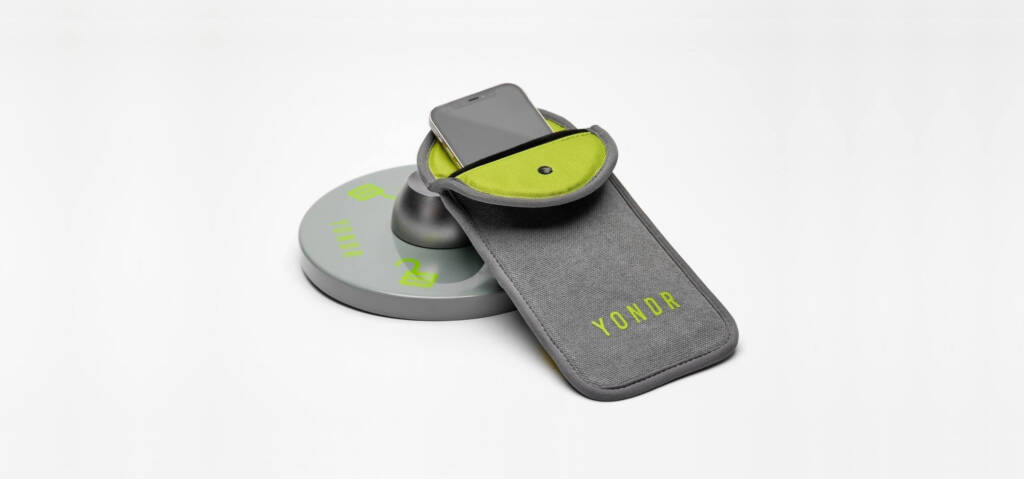

Popular for concerts and other live events, these snap-closure pouches remain locked — and in the owner’s possession — until tapped against an unlocking base.
- Wall-Mounted Phone Organizer With Numbered Pockets
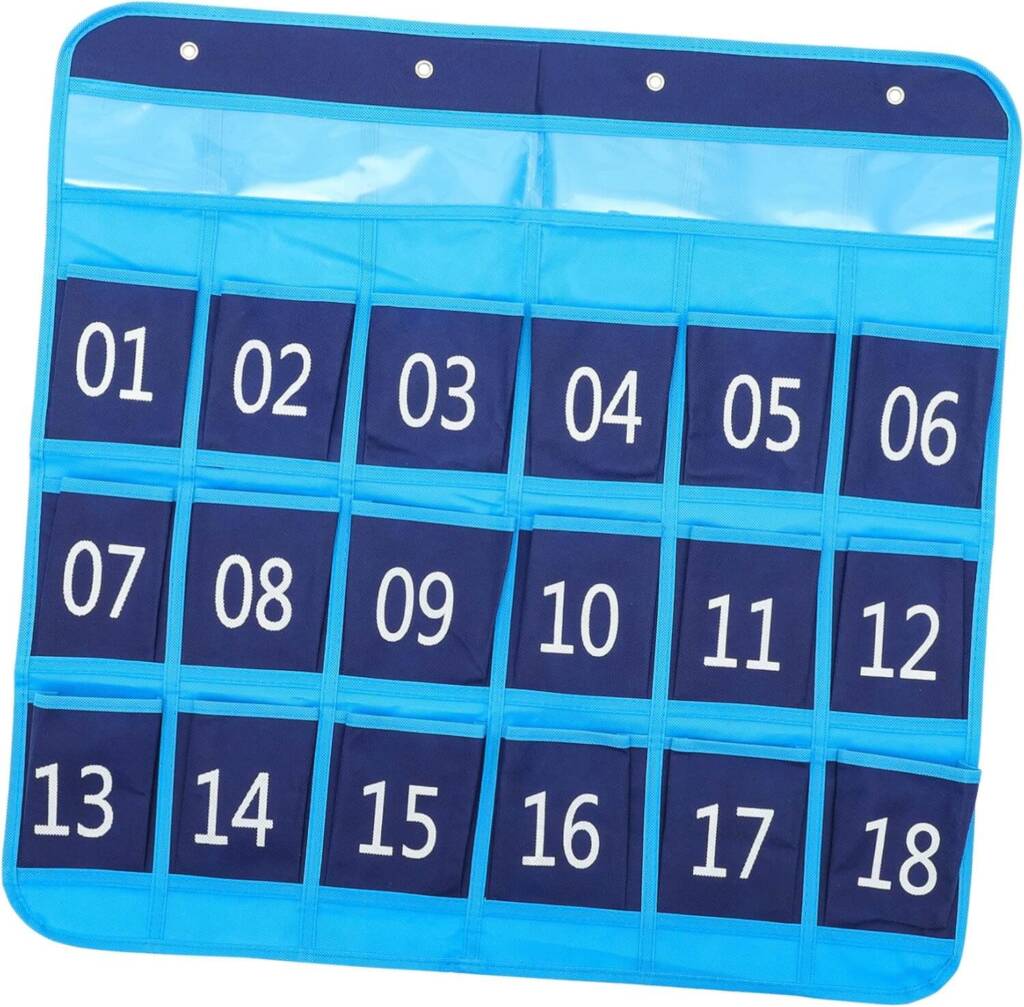

Numbered phone organizers are available through Amazon, but they can be just as easily made from a hanging shoe organizer.
- Classroom Phone Caddy
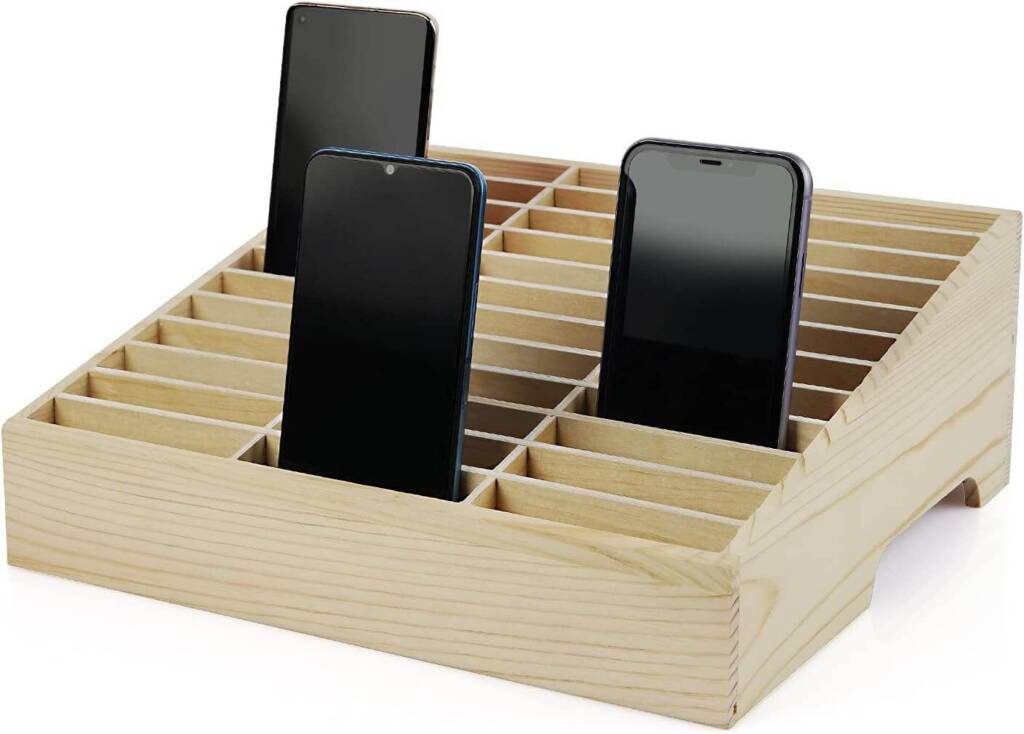

Desktop phone organizers are a sleek, unobtrusive way to store phones during class, but students may still be distracted by the visual. If possible, place the entire caddy in a drawer or otherwise out of sight.
- Lockable Storage Box
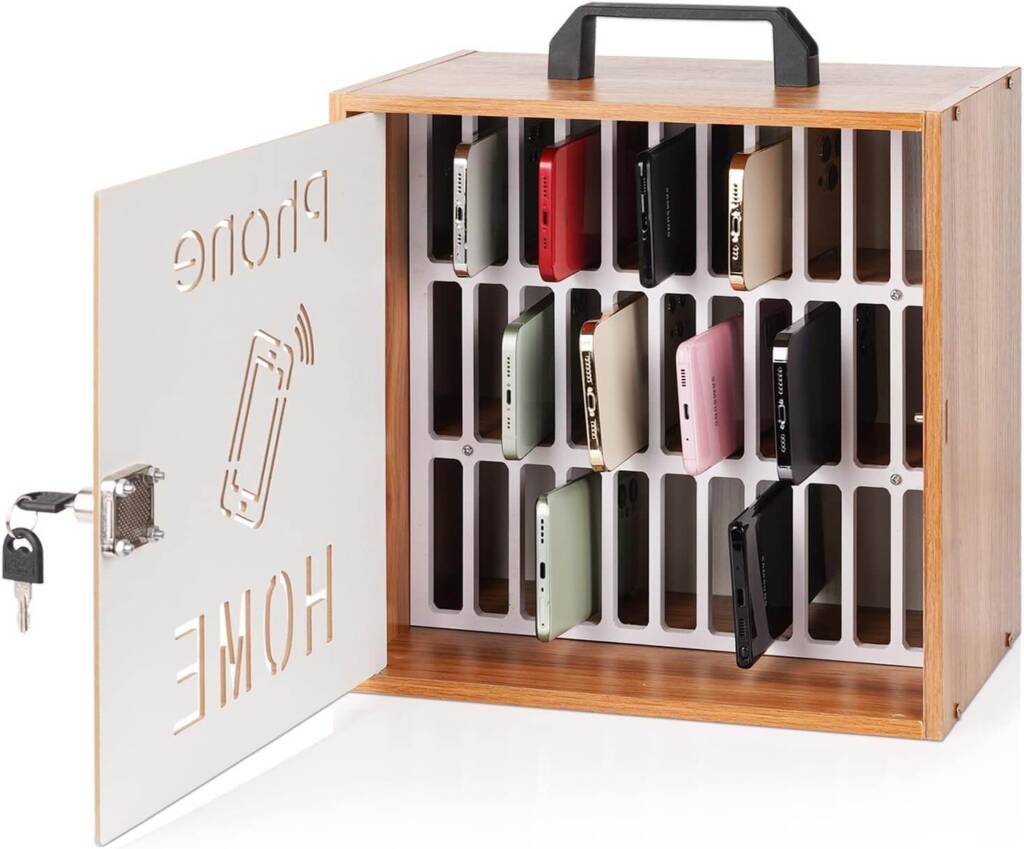

Lockboxes with individual slots are a creative solution for phone storage. A simple safe or cash box will also work, but be sure to provide some kind of protective liner to prevent phone screens from getting cracked.
- Individual Phone Lockers
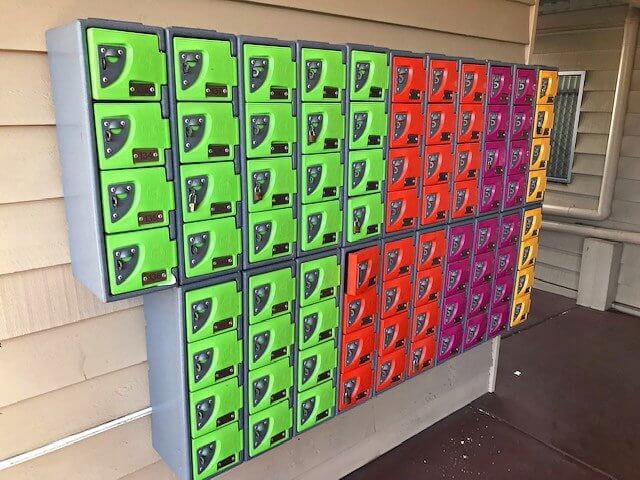

There are lockers made specifically for cellphones, which places the responsibility on the individual student to store their own phone and retain the key or combination. This solution may be best for older students who are already used to lockers and combinations.
- Designated Phone Drop-off Basket or Bin
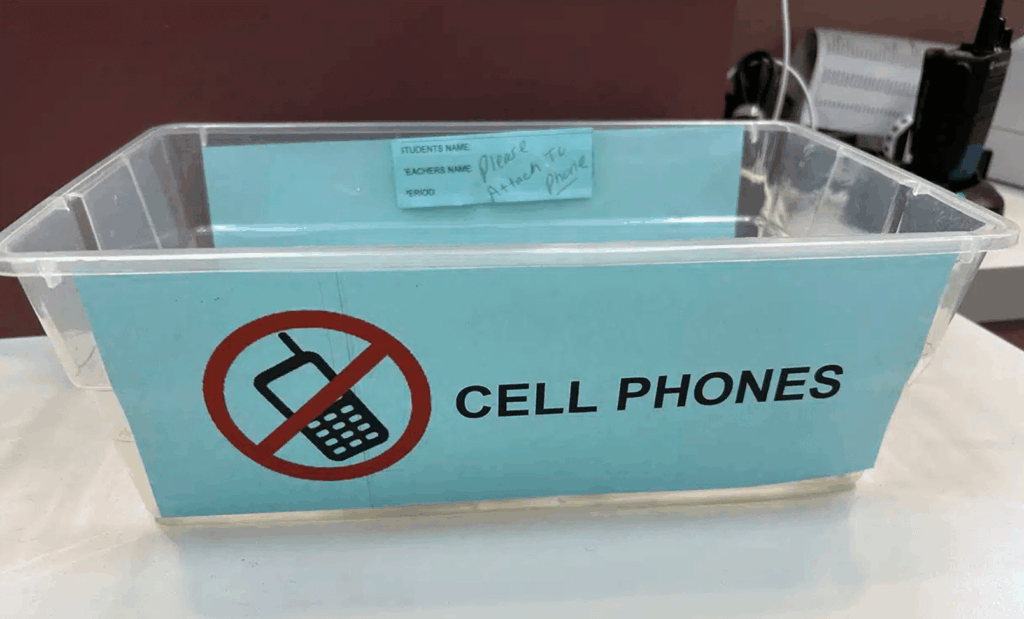

While not the most secure option, this storage solution saves time and hassle by providing a catch-all for phones as students enter the classroom. Be sure the vessel is large enough to accommodate all phones.
- Charging Station with Numbered Slots
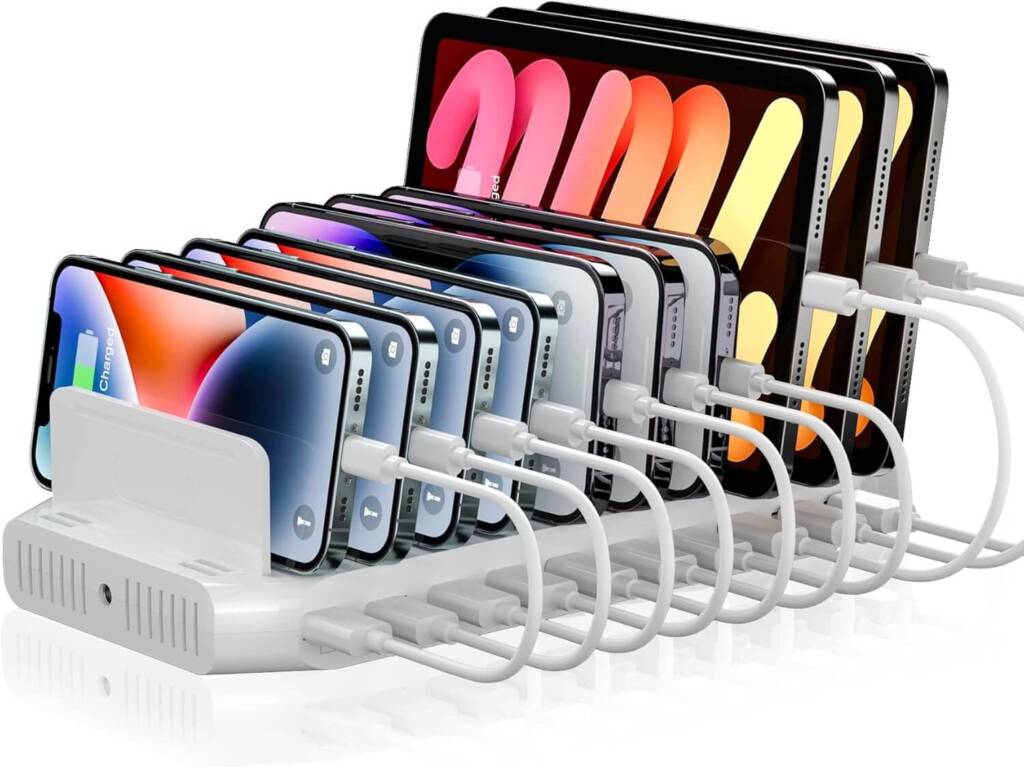

This solution goes the extra mile by allowing students to charge their phones while they are out of their hands. While a little more expensive, this offers a friendly compromise to students who may be reluctant to give up their phones. Students should be responsible for bringing their own compatible charging cords
10 Engagement Strategies to Reduce Reliance on Phones
Keeping students engaged in class is one of the most effective ways to minimize cellphone distractions. By making lessons interactive, collaborative and dynamic, teachers can naturally encourage students to stay focused on learning rather than their screens. The following strategies can promote engagement while reducing the temptation of phone use.
- Use Gamification to Make Lessons Engaging
Turning lessons into games, competitions or challenges increases motivation and makes learning fun. Activities that let students earn points or unlock new levels or win badges can make students more eager to participate in class without feeling the need to use their phones for entertainment. - Encourage Group Discussions and Collaborative Projects
When students work together, they are more likely to stay engaged and accountable to their peers. Group discussions, think-pair-share activities and collaborative projects keep students interacting with one another rather than self-isolating with their phones. - Design Hands-On or Experiential Learning Tasks
Activities that require students to physically engage with materials — such as science experiments or role-playing exercises — naturally pull their attention away from phones and into the learning experience. - Offer Short, Technology-Free Brain Breaks
Allowing students to take a few minutes for a movement break, mindfulness exercise or classwide stretch helps reset their focus. By giving students structured moments to recharge, they will be less inclined to check their phones out of restlessness during the lesson. - Use Real-World Problem-Solving Scenarios
Connecting lessons to real-life problems keeps students engaged and makes learning more meaningful. Whether it’s solving a community issue, analyzing current events or examining case studies, students are more likely to stay invested when they see the relevance of the material. - Integrate Movement or Kinesthetic Activities
Incorporating movement into lessons — such as gallery walks, station rotations or interactive simulations — helps break up monotony and keeps students engaged physically and mentally, making it less likely they will turn to their phones for stimulation. - Set Clear Learning Objectives Tied to Active Participation
When students understand the goals and expectations of a lesson, they are more likely to stay engaged. Clearly outlining participation requirements and making them part of grading criteria encourages students to stay focused.
- Foster a Student-Led Classroom Environment
Giving students more ownership over their learning increases engagement. Opportunities such as student-led discussions, peer teaching and project-based learning encourage students to take responsibility for their participation, making phone use less tempting. - Use Storytelling to Capture Attention
Storytelling is a powerful way to captivate students and sustain their interest. Whether through personal anecdotes, historical narratives or case studies, weaving stories into lessons makes content more engaging and reduces the need for outside distractions. - Build Relationships and Rapport to Reduce Off-Task Behavior
Students are more likely to respect classroom rules and stay engaged when they feel valued and connected to their teacher. Building rapport through genuine conversations, humor and showing interest in students’ lives fosters a positive classroom culture where students are less inclined to disengage with their phones.
By implementing these strategies, teachers can create a dynamic, engaging learning environment that naturally minimizes phone use while keeping students focused and invested in their education.
9 Positive Ways to Incorporate Phones in Class
When used intentionally, cellphones can be powerful educational tools that enhance learning rather than distract from it. By leveraging mobile technology for research, collaboration and interactive learning, teachers can engage students in meaningful ways while promoting digital literacy. Below are some productive ways to integrate cellphones into the classroom.
- Conduct Live Polls or Surveys
Engaging students in real-time polls and surveys helps gauge understanding, spark discussion and encourage participation. Mobile apps like Poll Everywhere and Slido allow students to respond anonymously, making it easier for all voices to be heard. - Use Phones for Research During Group Projects
Instead of relying solely on textbooks or printed materials, students can use their phones to look up credible sources, fact-check information and explore diverse perspectives while working on collaborative projects. - Access Educational Apps
Students can use phones to supplement their learning on the go with educational apps tailored to various subjects. Apps like Duolingo support language learning, while Khan Academy offers lessons in math, science and history. - Record and Analyze Data for Science Experiments
Phones can be used to collect and analyze scientific data in real time. Students can take measurements, record observations, track experiment progress and use graphing apps to visualize results. - Use QR Codes to Access Lesson Materials or Assignments
Teachers can generate QR codes that link to assignments, readings or multimedia resources, which students can then scan with their phones to quickly access materials without needing printed copies. - Watch Supplemental Educational Videos on Platforms Like TED-Ed or YouTube
Short, high-quality videos from TEDEd, National Geographic or educational YouTube channels can reinforce classroom topics, provide real-world context and spark meaningful discussions. - Create Digital Storytelling Projects
Students can create digital storytelling projects by capturing photos, recording interviews or filming short documentaries on their phones to explore an academic topic. - Use Productivity Apps for Note-Taking
Encouraging students to use note-taking apps such as Evernote or Google Keep helps them stay organized and synchronize their notes across devices for easy review and study. - Collaborate on Shared Documents via Google Docs or Microsoft Teams
Phones make it easy for students to work together on shared documents, brainstorm ideas in real time and contribute to group assignments using platforms like Google Docs, Microsoft Teams or Slack.
Effectively managing cellphone use in the classroom is just one of the many challenges educators face in creating a productive learning environment — but developing these classroom management skills is a crucial part of professional growth.
For teachers looking to deepen their expertise in this area, the online Master of Education program at USD provides research-based strategies and practical tools for navigating classroom challenges with confidence. Explore the curriculum to learn how this program can support your growth as an educator and help you create more effective and engaging learning experiences for your students.